New custom house in Fairfax,VA
 |
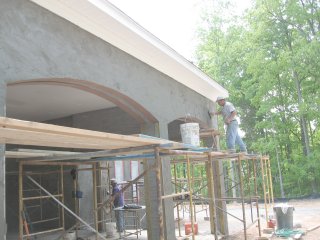 |
| Masonite strips are set with string lines on the arches,
after the scratch coat sets up. Columns are formed with wood strips at
the same time. |
Here, walls are filled to the strips and the masonite forms, and then
rodded off (straightened with a rod.) |
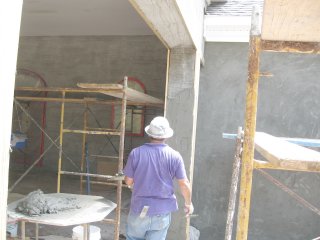 |
 |
| After the mortar sets on the outside wall, the wood strips are
set on the inside of the column and filled. |
Quarter inch thick masonite is ripped into
3/4" wide strips with a table saw. |
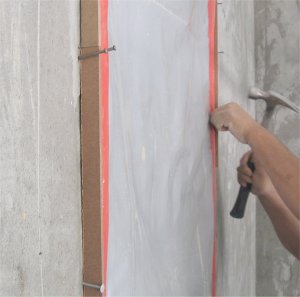 |
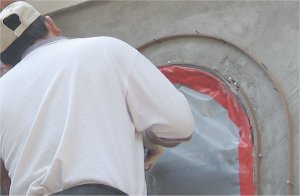 |
Strips are nailed against edge of windows
to form inside edge. After the brown coat sets up, the form is removed
and the gap is filled with the finish coat. These should look lke cut
sandstone when we are finished. |
The outside edge of the form is held in place by nails. The masonite
makes a nice smooth transition from the curve to the straight sides. |
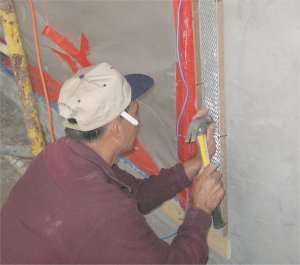 |
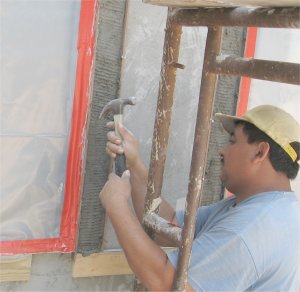 |
| Metal lath is nailed to the brown coat. This is insurance my window
surrounds will never fall off. |
After the scratch coat on the metal lath starts to set, the nails on
the inside of the form are pulled out. This gets rid of the obstacles in
our path filling in the forms. |
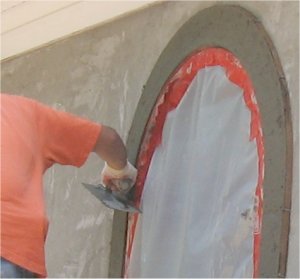 |
 |
| Forms are filled and straightened with a trowel. |
This is important: areas where the keystones go are marked and have
mortar scraped off.
Why didn't we put on the stones first and butt the forms to them ?
The avoid straight spots at the ends. This way, the masonite holds the
curve in tension. BTW: these are REAL cast keystones, not flimsy pieces
of styrofoam, like you see on new houses in McLean or Great Falls, for
example. Please come back to see the finished project. |









